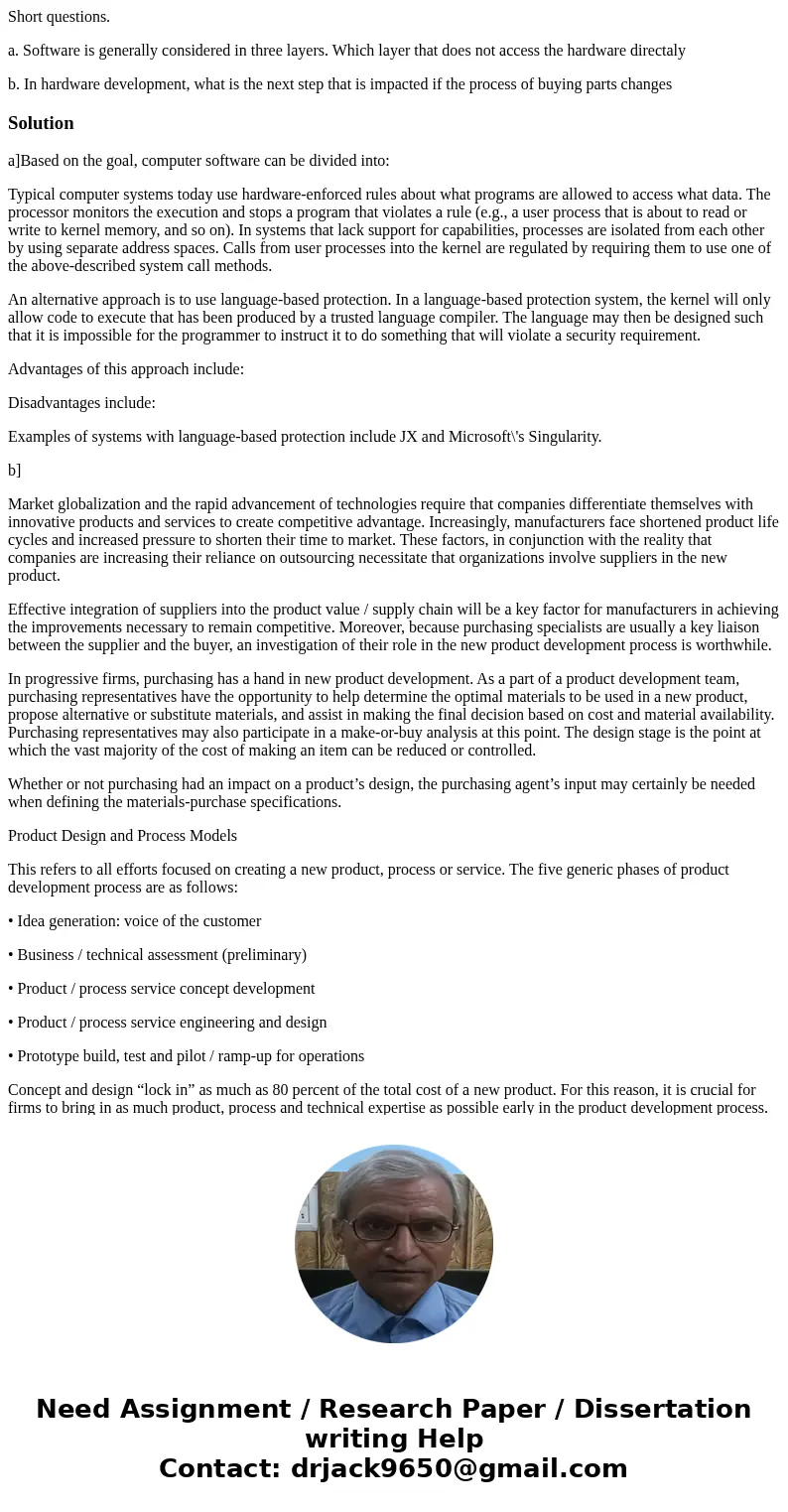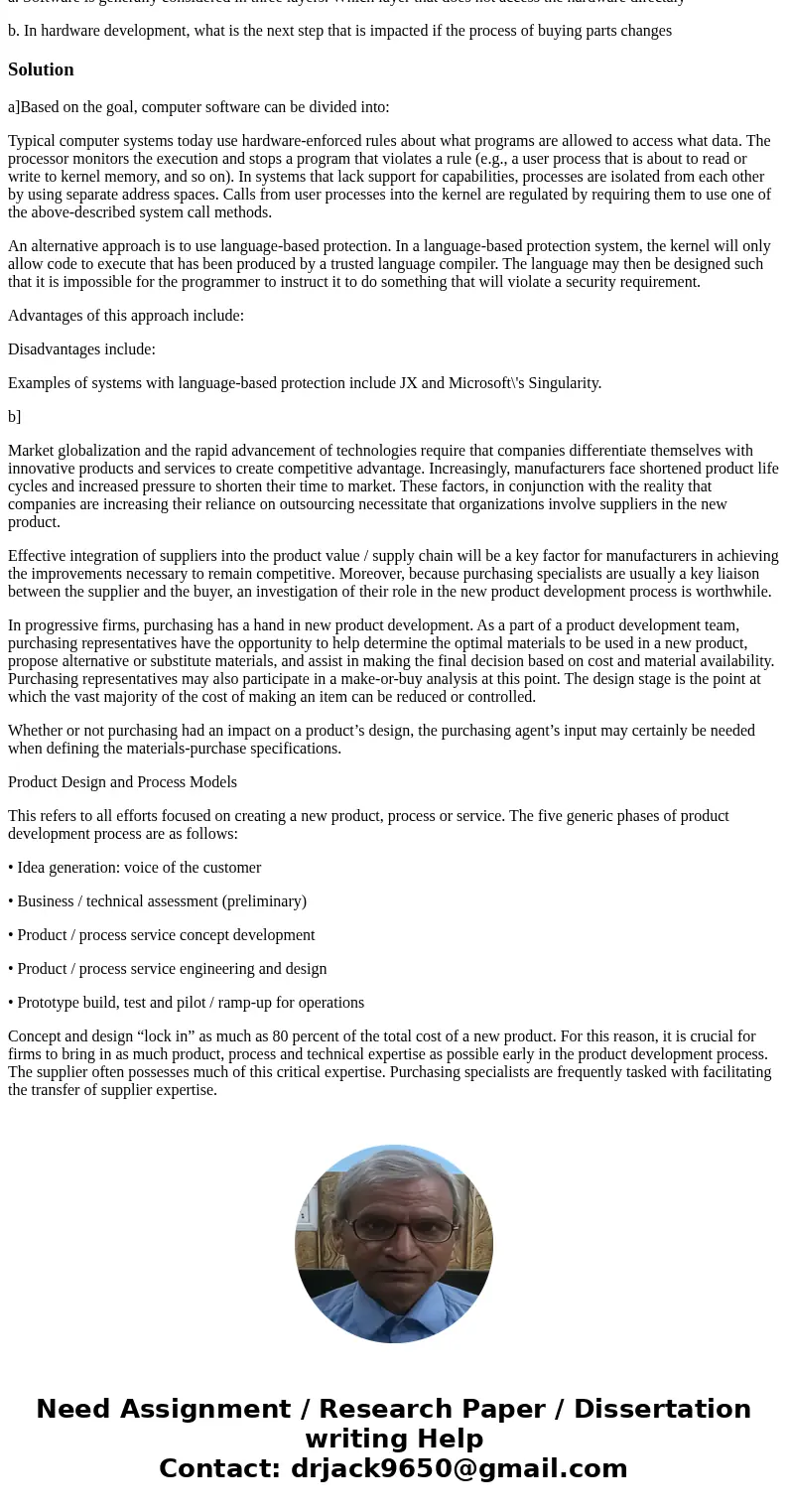Short questions a Software is generally considered in three
Short questions.
a. Software is generally considered in three layers. Which layer that does not access the hardware directaly
b. In hardware development, what is the next step that is impacted if the process of buying parts changes
Solution
a]Based on the goal, computer software can be divided into:
Typical computer systems today use hardware-enforced rules about what programs are allowed to access what data. The processor monitors the execution and stops a program that violates a rule (e.g., a user process that is about to read or write to kernel memory, and so on). In systems that lack support for capabilities, processes are isolated from each other by using separate address spaces. Calls from user processes into the kernel are regulated by requiring them to use one of the above-described system call methods.
An alternative approach is to use language-based protection. In a language-based protection system, the kernel will only allow code to execute that has been produced by a trusted language compiler. The language may then be designed such that it is impossible for the programmer to instruct it to do something that will violate a security requirement.
Advantages of this approach include:
Disadvantages include:
Examples of systems with language-based protection include JX and Microsoft\'s Singularity.
b]
Market globalization and the rapid advancement of technologies require that companies differentiate themselves with innovative products and services to create competitive advantage. Increasingly, manufacturers face shortened product life cycles and increased pressure to shorten their time to market. These factors, in conjunction with the reality that companies are increasing their reliance on outsourcing necessitate that organizations involve suppliers in the new product.
Effective integration of suppliers into the product value / supply chain will be a key factor for manufacturers in achieving the improvements necessary to remain competitive. Moreover, because purchasing specialists are usually a key liaison between the supplier and the buyer, an investigation of their role in the new product development process is worthwhile.
In progressive firms, purchasing has a hand in new product development. As a part of a product development team, purchasing representatives have the opportunity to help determine the optimal materials to be used in a new product, propose alternative or substitute materials, and assist in making the final decision based on cost and material availability. Purchasing representatives may also participate in a make-or-buy analysis at this point. The design stage is the point at which the vast majority of the cost of making an item can be reduced or controlled.
Whether or not purchasing had an impact on a product’s design, the purchasing agent’s input may certainly be needed when defining the materials-purchase specifications.
Product Design and Process Models
This refers to all efforts focused on creating a new product, process or service. The five generic phases of product development process are as follows:
• Idea generation: voice of the customer
• Business / technical assessment (preliminary)
• Product / process service concept development
• Product / process service engineering and design
• Prototype build, test and pilot / ramp-up for operations
Concept and design “lock in” as much as 80 percent of the total cost of a new product. For this reason, it is crucial for firms to bring in as much product, process and technical expertise as possible early in the product development process. The supplier often possesses much of this critical expertise. Purchasing specialists are frequently tasked with facilitating the transfer of supplier expertise.


 Homework Sourse
Homework Sourse